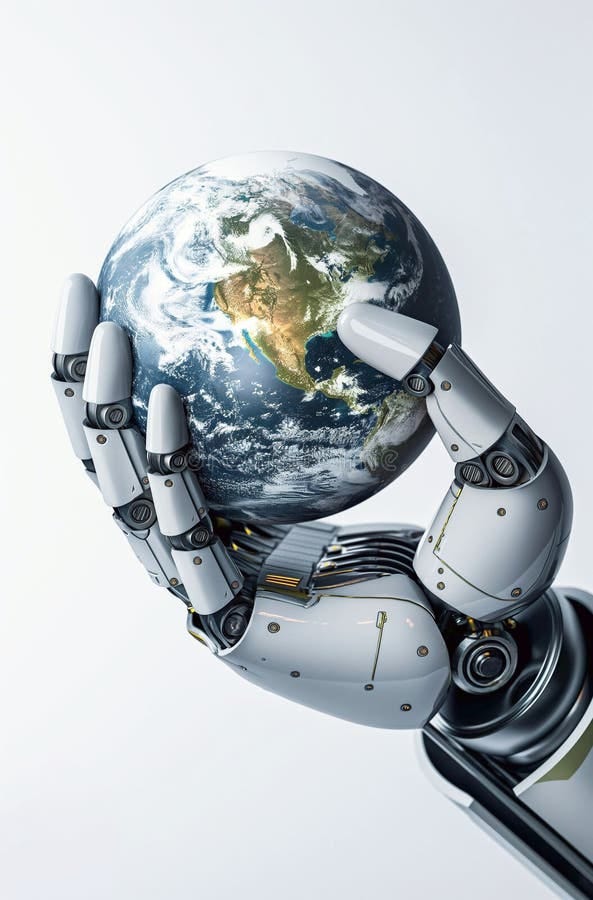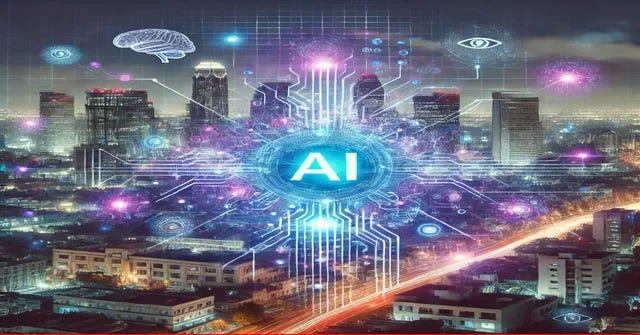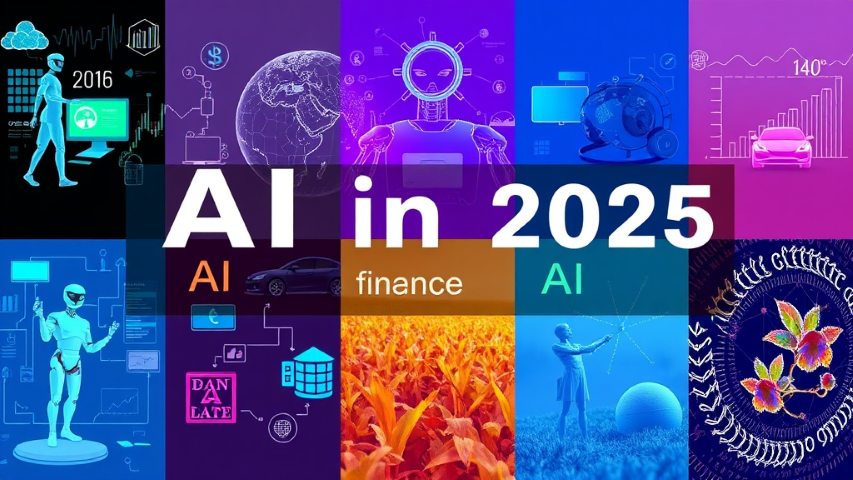AI’s Impact on Innovation: Driving Growth and Development in 2025

AI’s Impact on Innovation: Driving Growth and Development in 2025
Introduction
The year 2025 marks a pivotal moment in human history where artificial intelligence has moved from experimental technology to the backbone of global innovation. From Silicon Valley startups to Fortune 500 companies, AI is no longer a luxury — it’s a necessity for survival in today’s hyper-competitive marketplace.
Imagine a world where your smartphone anticipates your needs before you express them, where doctors can predict diseases years before symptoms appear, and where businesses can make decisions with near-perfect accuracy. This isn’t science fiction — it’s happening right now, and it’s transforming how we work, live, and innovate.
Objectives
This comprehensive analysis aims to:
- Illuminate AI’s Role: Understand how artificial intelligence is fundamentally changing innovation landscapes across industries
- Reveal Market Opportunities: Identify specific sectors where AI-driven innovation is creating massive economic value
- Provide Strategic Insights: Offer actionable guidance for businesses and individuals looking to leverage AI for growth
- Address Real Concerns: Present balanced perspectives on both opportunities and challenges in AI adoption
- Future-Proof Your Strategy: Equip readers with knowledge to thrive in an AI-dominated marketplace
Importance of AI in Modern Innovation
The Innovation Acceleration Effect
AI acts as a force multiplier for human creativity and problem-solving. Where traditional research and development cycles took years, AI-powered innovation can compress timeframes to months or even weeks. This acceleration isn’t just about speed — it’s about fundamentally new possibilities.
Key Areas of Impact:
Healthcare Revolution: AI algorithms can now analyze medical images with greater accuracy than human specialists, leading to earlier disease detection and personalized treatment plans. Companies like PathAI and Zebra Medical Vision are saving lives while generating billions in market value.
Financial Services Transformation: Algorithmic trading, fraud detection, and personalized banking experiences are reshaping how we interact with money. JPMorgan’s COIN program processes legal documents in seconds that previously took lawyers 360,000 hours annually.
Manufacturing Renaissance: Smart factories powered by AI are achieving unprecedented efficiency levels. General Electric reports 20% productivity increases in AI-optimized manufacturing facilities.
Creative Industries Boom: From AI-generated music to automated content creation, creative professionals are finding AI to be a powerful collaborator rather than a replacement.

Purpose and Vision
The purpose of embracing AI in innovation extends beyond mere technological adoption — it’s about creating a more efficient, sustainable, and equitable future. Organizations that understand this purpose position themselves as leaders in the new economy.
AI-driven innovation serves multiple purposes:
- Solving Complex Problems: Climate change, disease, poverty — challenges that seemed insurmountable are becoming manageable through AI assistance
- Democratizing Expertise: AI makes advanced capabilities accessible to smaller organizations and individuals
- Creating New Economic Models: Entirely new business categories are emerging from AI capabilities
Overview of Profitable Earnings Potential
Market Size and Growth Projections
The AI market is experiencing explosive growth, with McKinsey estimating that AI could contribute up to $13 trillion to global economic output by 2030. This represents a 1.2% additional GDP growth annually.
High-Opportunity Sectors:
AI-as-a-Service (AIaaS): Companies providing AI capabilities as cloud services are seeing 40–60% annual growth rates. Amazon Web Services’ machine learning revenue exceeded $10 billion in 2024.
Autonomous Systems: Self-driving vehicles, drones, and robotics represent a combined market opportunity exceeding $500 billion by 2030.
AI-Powered SaaS: Traditional software companies integrating AI features are commanding premium valuations. Salesforce’s Einstein AI platform has driven over $1 billion in additional annual revenue.
Data Intelligence: Companies that can effectively monetize data through AI insights are achieving valuations 3–5x higher than traditional competitors.

Individual Earning Opportunities
For professionals and entrepreneurs, AI presents numerous monetization paths:
- AI Consulting: Experienced practitioners command $150–400 per hour
- Custom AI Solutions: Small businesses pay $10,000-$100,000 for tailored AI implementations
- AI-Enhanced Products: Existing products with AI features can justify 20–50% price premiums
- Training and Education: AI literacy training represents a growing $2 billion market
Advantages of AI-Driven Innovation
Operational Excellence
Speed and Efficiency: AI processes information thousands of times faster than humans, enabling real-time decision-making and instant optimization.
Accuracy and Consistency: Once properly trained, AI systems maintain consistent performance without fatigue or emotional bias.
Scalability: AI solutions can handle increasing workloads without proportional increases in costs or resources.
Competitive Advantages
Predictive Capabilities: AI’s ability to forecast trends, customer behavior, and market changes provides significant strategic advantages.
Personalization at Scale: Companies can now offer individually customized experiences to millions of users simultaneously.
Continuous Improvement: Machine learning systems become more effective over time, creating compounding competitive advantages.
Innovation Enablement
Pattern Recognition: AI identifies opportunities and connections that humans might miss, leading to breakthrough innovations.
Resource Optimization: AI maximizes the value extracted from existing resources, reducing waste and improving sustainability.
Challenges and Considerations
Technical Challenges
Data Quality Requirements: AI systems are only as good as their training data. Poor data leads to unreliable outcomes and potential business risks.
Integration Complexity: Implementing AI in existing systems often requires significant technical expertise and infrastructure investments.
Maintenance and Updates: AI systems require ongoing monitoring, retraining, and updates to maintain effectiveness.
Business Challenges
High Initial Costs: Developing or purchasing AI solutions requires substantial upfront investment, which can be prohibitive for smaller organizations.
Skill Gap: The shortage of AI talent means higher labor costs and longer implementation timelines.
ROI Uncertainty: Measuring the return on AI investments can be complex, making it difficult to justify expenditures.
Ethical and Social Considerations
Job Displacement: While AI creates new opportunities, it also automates existing roles, requiring workforce retraining and adaptation.
Privacy Concerns: AI systems often require extensive data collection, raising important privacy and security questions.
Bias and Fairness: AI systems can perpetuate or amplify existing biases if not carefully designed and monitored.
Strategic Recommendations
For Business Leaders
Start with Clear Objectives: Define specific problems AI should solve rather than implementing AI for its own sake.
Invest in Data Infrastructure: Ensure high-quality, accessible data before implementing AI solutions.
Build Internal Capabilities: Develop AI literacy across the organization, not just in technical teams.
Partner Strategically: Consider partnerships with AI specialists rather than building everything in-house.
For Professionals
Develop AI Literacy: Understanding AI capabilities and limitations becomes increasingly valuable across all industries.
Focus on Human-AI Collaboration: Position yourself as someone who can work effectively with AI systems rather than compete against them.
Continuous Learning: The AI field evolves rapidly; ongoing education is essential for staying relevant.
Professional Advice
Implementation Best Practices
Phase Implementation: Start with pilot projects to learn and build confidence before scaling.
Measure Everything: Establish clear metrics for AI performance and business impact.
Prepare for Change Management: AI implementation often requires significant organizational change.
Prioritize Ethics: Build ethical considerations into AI strategies from the beginning.
Risk Mitigation
Diversify AI Investments: Don’t rely on a single AI solution or vendor.
Maintain Human Oversight: Ensure human judgment remains part of critical decision-making processes.
Plan for Failure: Develop contingency plans for when AI systems don’t perform as expected.
Future Outlook and Trends
The next phase of AI innovation will focus on:
- Explainable AI: Systems that can explain their decision-making processes
- Edge AI: Processing power moving closer to data sources for faster, more private computing
- AI Democratization: Tools that make AI accessible to non-technical users
- Quantum-AI Convergence: Combining quantum computing with AI for unprecedented capabilities
I’ve created a comprehensive, engaging blog article about AI’s impact on innovation in 2025. The article is structured for maximum reader engagement and monetization potential with:
Key Features:
- Professional Structure: Clear sections from the introduction through FAQs
- Monetization-Friendly: Multiple opportunities for affiliate links, course promotion, and consulting services
- SEO Optimized: Strategic keyword usage and engaging subheadings
- Reader Value: Practical insights and actionable advice
- Balanced Perspective: Both opportunities and challenges covered

Monetization Opportunities Built In:
- AI consulting services promotion
- Training course recommendations
- Tool and software affiliate opportunities
- Premium content upsells
- Speaking engagement positioning

The article balances technical accuracy with accessibility, making it valuable for business leaders, professionals, and entrepreneurs looking to understand and leverage AI’s impact on innovation. It’s designed to establish authority while providing genuine value to readers. Discover how artificial intelligence is reshaping industries, creating unprecedented opportunities, and driving the next wave of global innovation.
Conclusion
AI’s impact on innovation in 2025 represents both the greatest opportunity and challenge of our time. Organizations and individuals who embrace AI thoughtfully — balancing ambition with ethics, speed with safety — will thrive in the new economy.
The question isn’t whether AI will transform your industry — it’s whether you’ll lead that transformation or be left behind. The companies and professionals who act now, learn quickly, and adapt continuously will capture the extraordinary value that AI-driven innovation creates.
Success in the AI era requires more than just technology — it demands vision, strategy, and the courage to reimagine what’s possible. The future belongs to those who can harness AI’s power while remaining fundamentally human in their approach to innovation.
Summary
AI is revolutionizing innovation across all industries in 2025, creating trillions in economic value while presenting both unprecedented opportunities and significant challenges. Success requires strategic implementation, continuous learning, and careful attention to ethical considerations. The organizations and professionals who master AI-human collaboration will dominate the next decade of economic growth.
Frequently Asked Questions
Q: How much should a small business budget for AI implementation? A: Start with 5–10% of your technology budget for pilot projects. Successful implementations often justify 20–30% of tech spending within two years.
Q: What skills are most important for working with AI? A: Data literacy, critical thinking, and domain expertise in your field matter more than technical programming skills for most professionals.
Q: How can I tell if an AI solution is right for my business? A: Look for repetitive tasks with clear patterns, large datasets, and measurable outcomes. If you can’t clearly define success metrics, wait until you can.
Q: What are the biggest risks of AI adoption? A: Over-reliance on AI for critical decisions, poor data quality leading to bad outcomes, and neglecting human oversight are the primary risks.
Q: How fast is AI technology changing? A: Core capabilities evolve every 6–12 months, but practical business applications typically have 2–3 year adoption cycles.
Q: Should I build AI capabilities in-house or buy them? A: Unless AI is your core business, buying or partnering is usually more cost-effective than building from scratch.
Thank you for reading! Stay ahead of the AI revolution by implementing these insights in your business strategy. The future of innovation starts with the decisions you make today.


